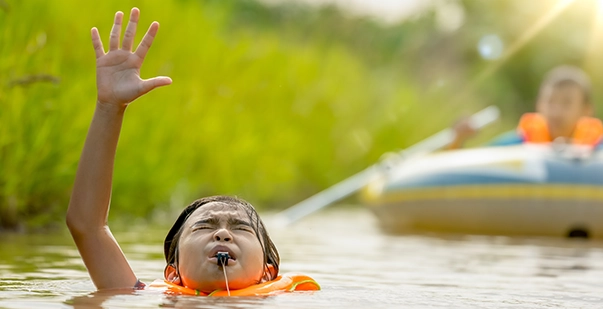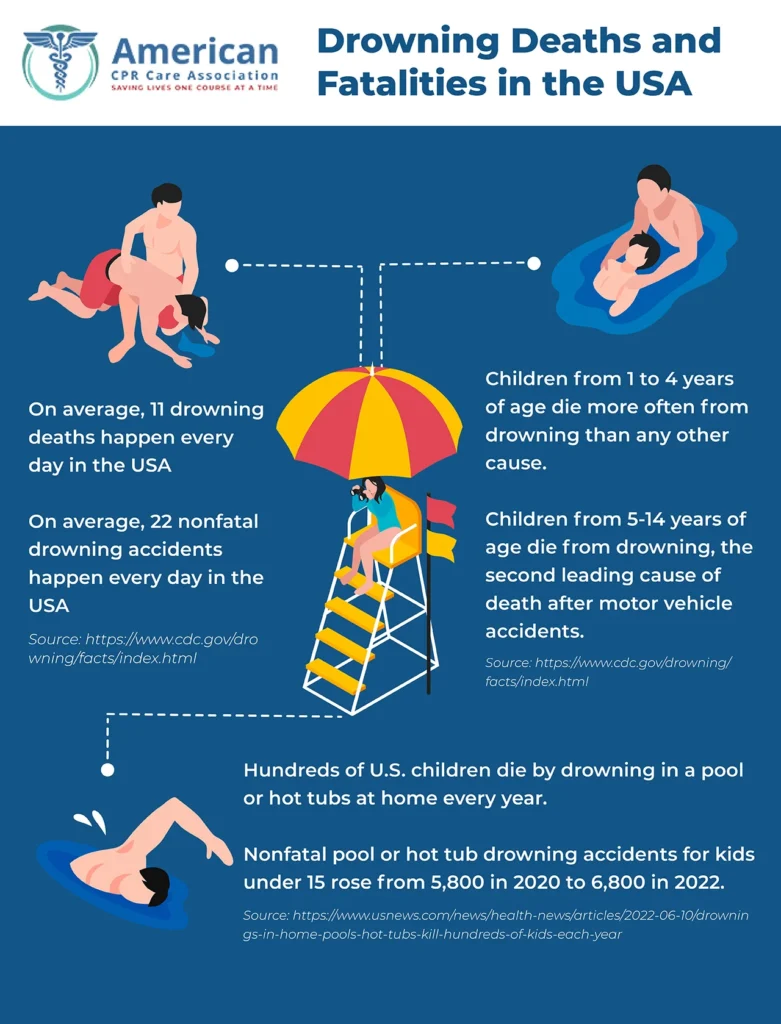
Last Updated On: August 30, 2024
The American CPR Care Association (ACCA) is a staunch believer that more and more people need to prepare themselves in case of a drowning emergency. Most children love water and tend to go near swimming pools, not realizing the depth of the water. This is why we suggest that to avoid such accidents, one must be better prepared with drowning prevention and rescue and become a lay responder, for when the occasion arises. This article discusses how to prevent kids from drowning and the steps that need to be taken.

Drowning claims thousands of lives every year. Did you know that more than one in five fatal drowning victims are children below 14? To ensure you protect your child from drowning it is crucial to supervise them at all times. Here are a few steps to protect your children from drowning.
Most people do not learn life-saving courses as they believe they will never need to use them. It is only in the case of emergencies that a lay responder truly values the certification. When you have young children, they tend to get themselves into accidents. It is best to stay ten steps ahead and register for a first aid and CPR course with the American CPR Care Association (ACCA) to reduce drowning mishaps. Pool owners should also sign up for this course.
Parents must be extra careful with their young children around swimming pools and ensure they are not alone. Make sure to supervise children at all times around water. Caregivers need to be aware of infants, toddlers, children and even teenagers around water bodies.
Life jackets are a must for children below 15 years of age. Parents should insist on asking for flotation jackets at the swimming pool or if they head out to go fishing or boating with young kids. While this will not be of much help, it can help your child stay afloat until the emergency team arrives in case of a drowning accident.
While air-filled or foam toys such as noodles, water wings and inner tubes seem like great toys to float on, they can cause more harm than being a life-saver. They are not substitutes for life jackets. In fact, a kid who tries to reach out for such floatation objects can drown while reaching out for it.
The pool area should be closed post pool hours. It should be enclosed with a fence at least five feet tall, and the gates should be locked to avoid misbehaved kids from jumping over it unsupervised. Install an iron fencing to keep kids away.
Most kids love the water, and the swimming pool is a favorite activity. If you’re wondering how to keep the pool child-safe, remember most children are ready for swimming lessons by the time they turn four years of age. This is why swimming lessons for kids of four years of age and above are approved by the American Academy of Pediatrics (AAP). Learning swimming is a basic survival skill every child should learn, but remember it is not an alternative for parental supervision.
While CCTV cameras and panic alarms seem like a waste of money, you will disagree in case of a drowning emergency. Panic alarms and CCTV cameras are a necessity around pool areas to ensure there is a quick call for help in times of need. A panic alarm will alert people nearby and caution them immediately. These equipment work second to a lifeguard in case one is not available around.
In case of a drowning accident, here’s what you need to do:
When you take an online CPR course certification, it helps you understand the workings of the human body. It helps you stay prepared so you can save a family member in times of need. You never know when an emergency may occur, but when you register for a life-saving course, it truly showcases your concern and humanity for fellow human beings. The American CPR Care Association offers easy enrollment in CPR certification online classes for lay persons and healthcare professionals alike. Get CPR trained, recertified and avail group discounts, all under one healthcare umbrella.

